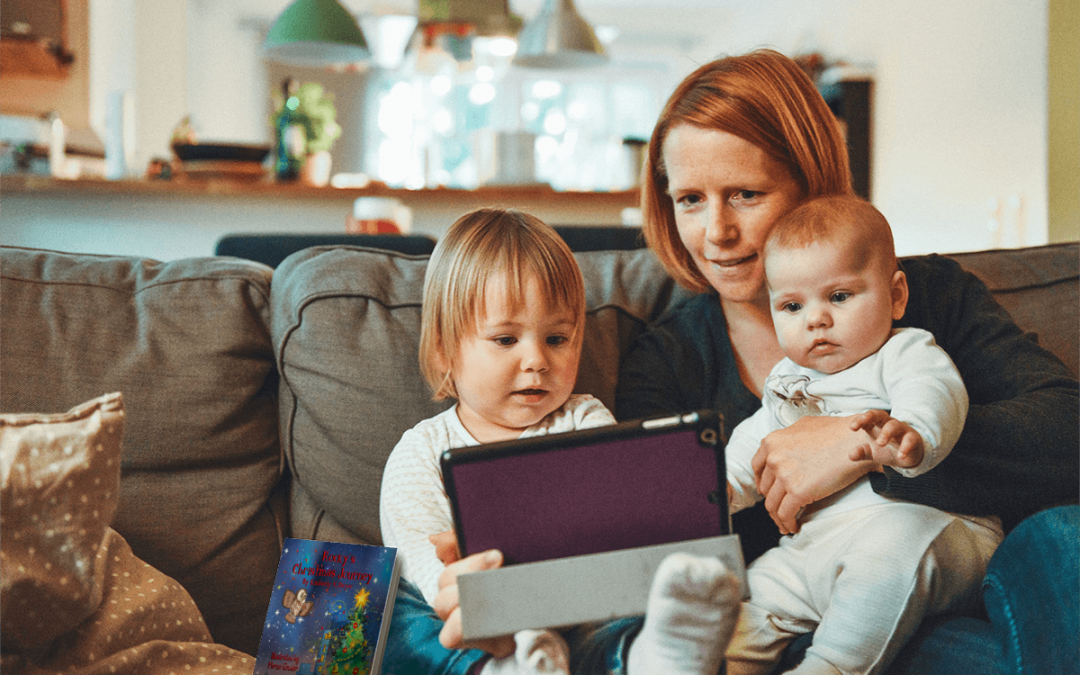If you’re a parent or caregiver, you probably enjoy reading books together with your children. But have you thought about the great ways reading together enhances a child’s skills? When you read children’s books together, you support literacy skills in more ways than one. Here are my top five reasons for reading together.
1. Enhancing Literacy Skills
Reading together provides modeling opportunities for children about the value of books. When you read together, even the youngest child starts to make rich associations about books and what I’ll call “book behavior.” Your child learns how to handle a book, how to flip pages, and that the orientation of a book is constant (in English and most western languages, reading flipping pages from the right to the left and reading from left to right). Over time, children learn to connect the story they hear and the printed words on the page. Watching their caregiver read from those symbols that make up written language, children learn to associate the printed text to the words and eventually work on decoding skills for reading. Children also learn to associate the pictures with the words which can help them to use illustration as a decoding tool to support reading.
Reading together can also teach children about sequencing and prediction. Children learn that stories have a discrete structure: a beginning, a middle, and an end. This helps them to make predictions and anticipate what comes next, which is a useful skill not only in reading but in life. By understanding the structure of a story, we also model for children how to relate information in a particular sequence. This can help them with oral and written communication skills.
In my book, Rocky’s Christmas Journey, I include a caregiver’s guide to support rich conversations about the book. The questions in my guide support not just literacy skills, but also emotional skills that I’ll describe next.
2. Emotional Skills
Reading books together provides a unique opportunity to aid children in emotion identification skills. Picture book stories are often filled with characters experiencing a range of emotions. Talking about emotions helps children to understand their own rich emotional experiences. Giving words to feelings helps children articulate their internal experiences and seek out support or connection around their emotional life. Talking about books allows children to begin to develop a feelings vocabulary to aid in expression. We can support children in doing this by asking how characters are feeling and asking what clues the child has to how the character is feeling, such as facial expressions, body language, and situations leading to particular feelings.
We can also use reading together as an opportunity to help children with perspective taking, a key skill for getting along with others. Often, conflict occurs in a story because characters have different perspectives or mistaken interpretations of events. By asking children to consider what various characters are thinking and feeling, we help children to appreciate that there are different reactions to similar situations by different people.
Supporting children in understanding the feelings of others when we read together also helps them to build empathy. They may learn that others can have different feelings than they might have to similar situations, and that they can support others even with different perspectives. We can help children make the transition from story to real life by asking questions like “what would you do in a situation like this?”, or “how might you help if you were in the story?”
In Rocky’s Christmas Journey, Rocky experiences many emotions that are reflected in the way his name changes throughout the story. These are great opportunities to help children identify feelings and situations leading to particular emotions.
3. Sleep Routine
Many families incorporate reading together as part of a sleep routine. Sharing a book is a great, quiet activity that can help signal the end of the day and the transition to sleep. When we build consistent bedtime routines for children, we start to construct a rich series of connected events that all serve as conditioned stimuli for going to sleep. This helps to maximize a child’s ability to transition into sleep without difficulties. Reading together at bedtime gives the imagination a chance to wander and disconnect from the days activities. Spending time with a loved one over a shared book at bedtime is also a special touchpoint in the day for children and caregivers to connect.
4. Creating Tradition
Traditions help us to mark the passage of time and celebrate special events. By repeating traditions, we celebrate our families, our heritages, and our communities. We convey that a child is part of something larger and something special, and we provide meaning and connection between generations living and past. Sharing books can be a great part of traditions, especially related to holidays. We can share special books that describe holiday traditions, but we can also make reading a special book a holiday tradition in itself. One of my friends has an advent tradition that involves reading a holiday book every night during December until Christmas eve. In my family, children receive a special book on Christmas eve as an early gift and we then read the books together. Rocky’s Christmas Journey is a perfect addition to your holiday bookshelf.
5. Connection
Reading books together is a great opportunity for building connection between adults and children. Reading and sharing with a special person helps children and caregivers to bond and create shared positive memories. Children eventually can also read to special people in their lives. With the advent of the internet, we can also read together with children who are not physically with us using FaceTime or similar applications. Purchasing multiple copies of a book allows caregivers and children who are physically distant to read together across the miles.
What are your favorite reasons for sharing books with the children in your life? I’d love to hear from you!

